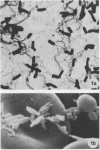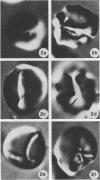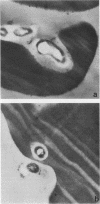Abstract
Bartonella bacilliformis, which causes the human diseases Oroya fever and verruga peruana, binds to human erythrocytes in vitro and produces substantial and long-lasting deformations in erythrocyte membranes, including cone-shaped depressions, trenches, and deep invaginations. The deforming force is probably provided by the polar flagella of these highly motile bacteria. Deep invaginations containing bacteria are commonly seen, and membrane fusion at the necks of the invaginations leads to the formation of intracellular vacuoles containing bacteria. Fluorescent compounds present externally render the vacuoles fluorescent and, occasionally, lightly fluorescent cells are seen, suggesting that the vacuoles sometimes rupture to admit the bacteria to the cytoplasm. Vacuoles present in fluorescent erythrocytes prepared by preloading the erythrocytes with fluorescent compounds are seen as dark areas from which the fluorescent marker is excluded. Entry of the bacteria appears to be the result of a process of forced endocytosis.
Full text
PDF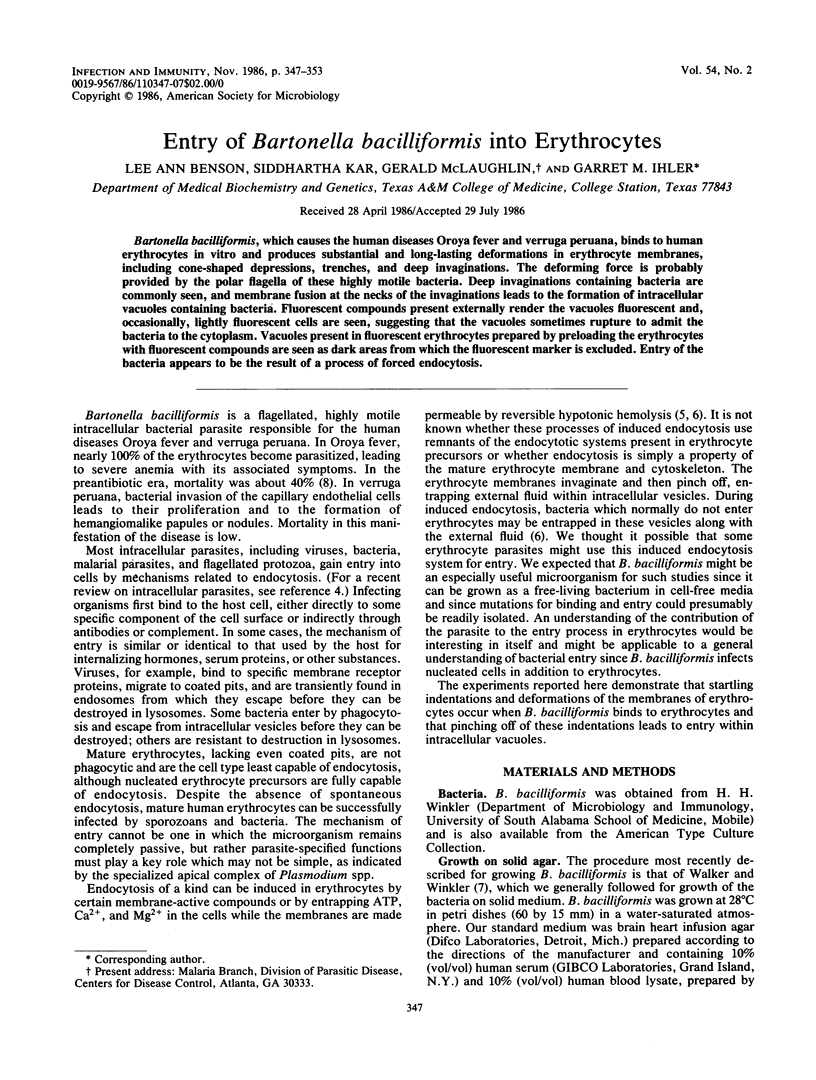
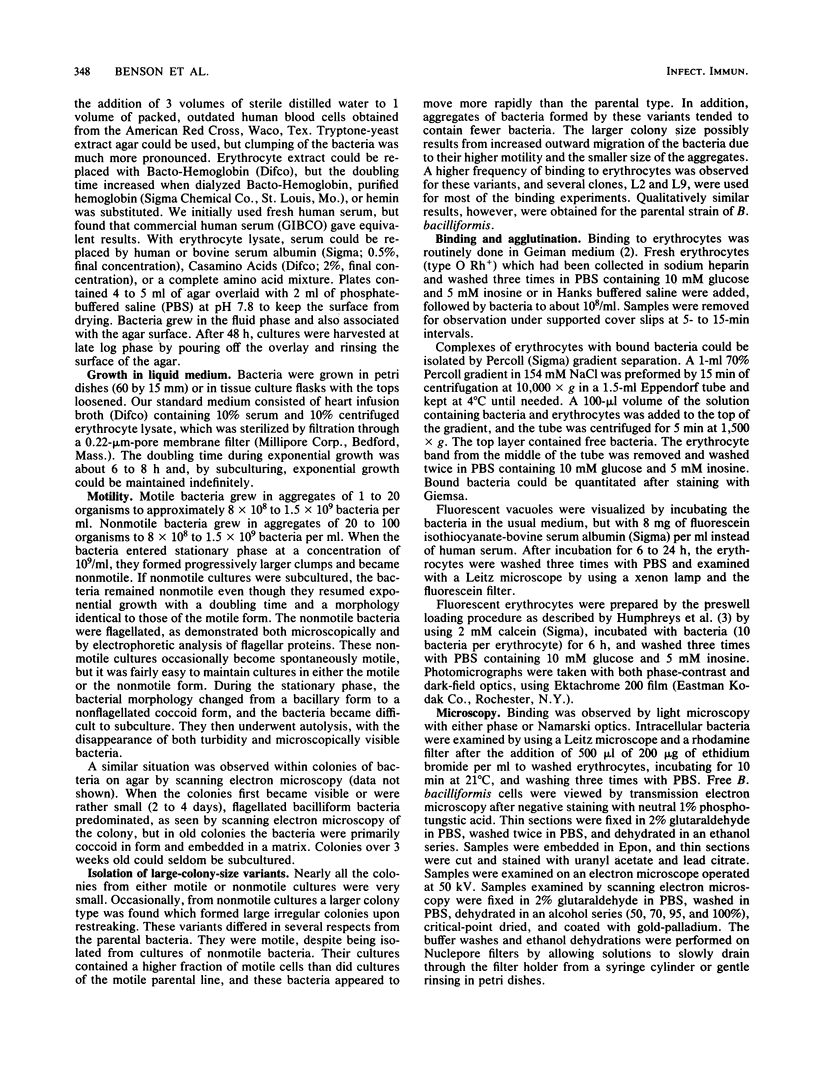
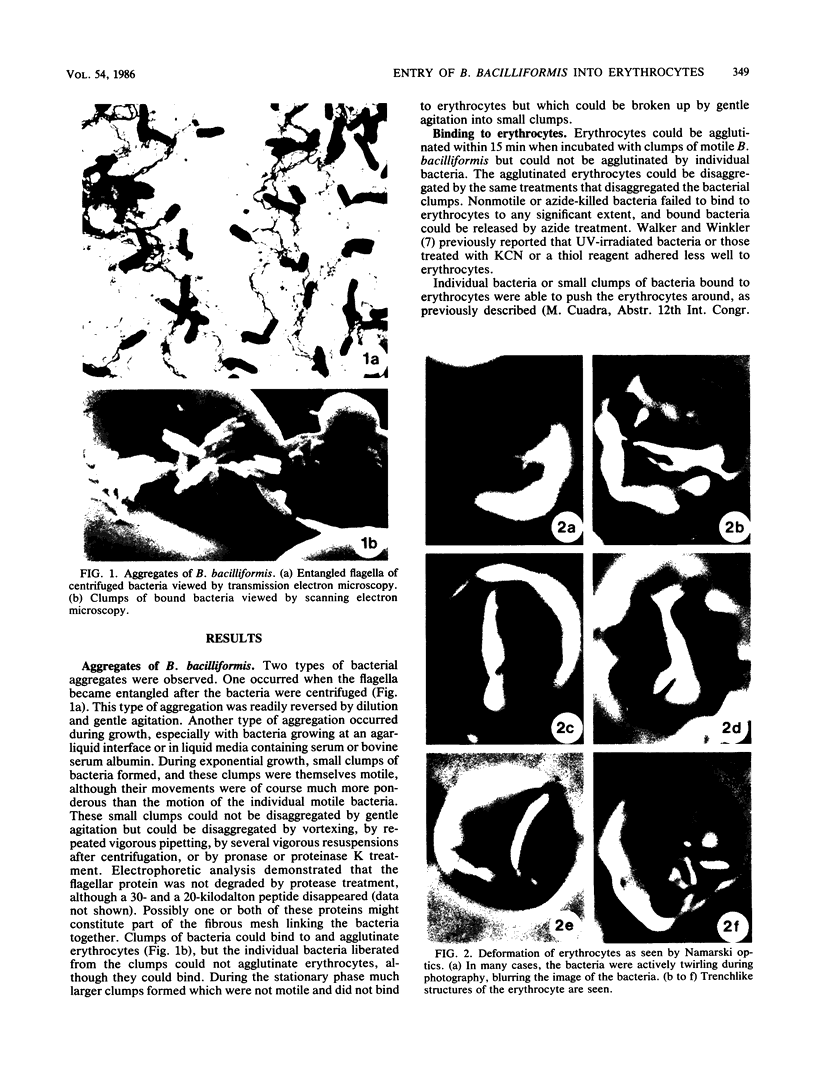
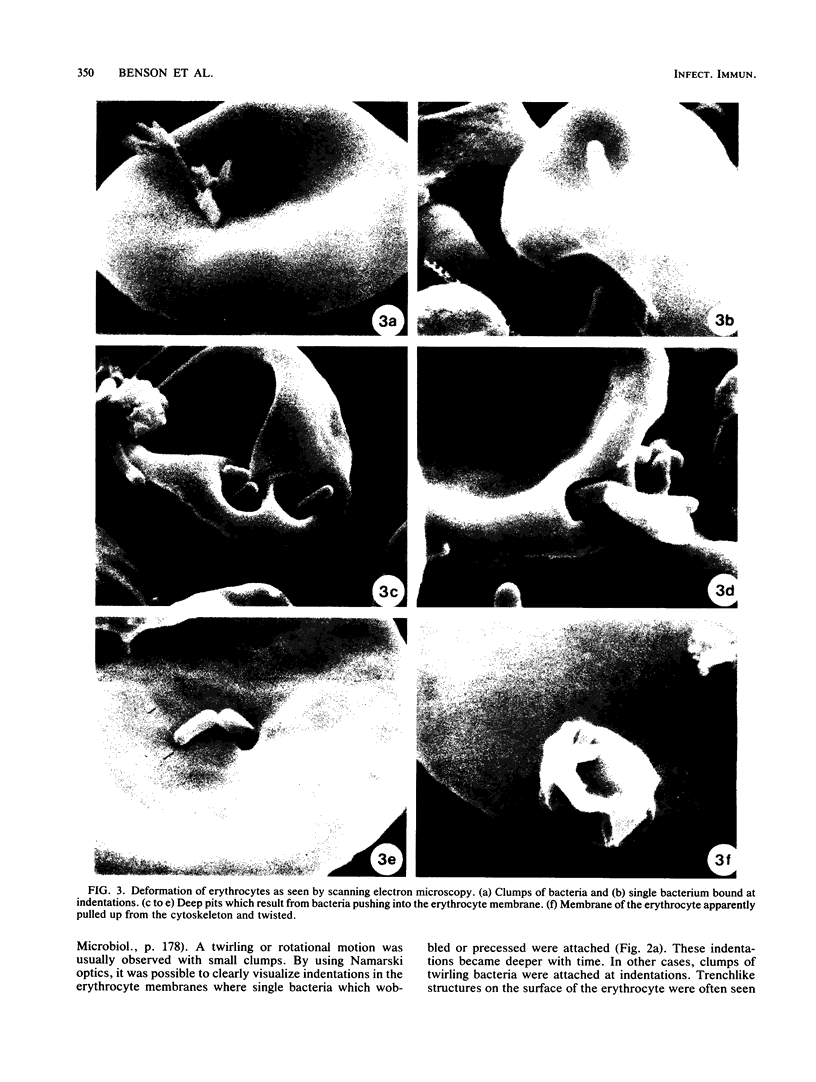
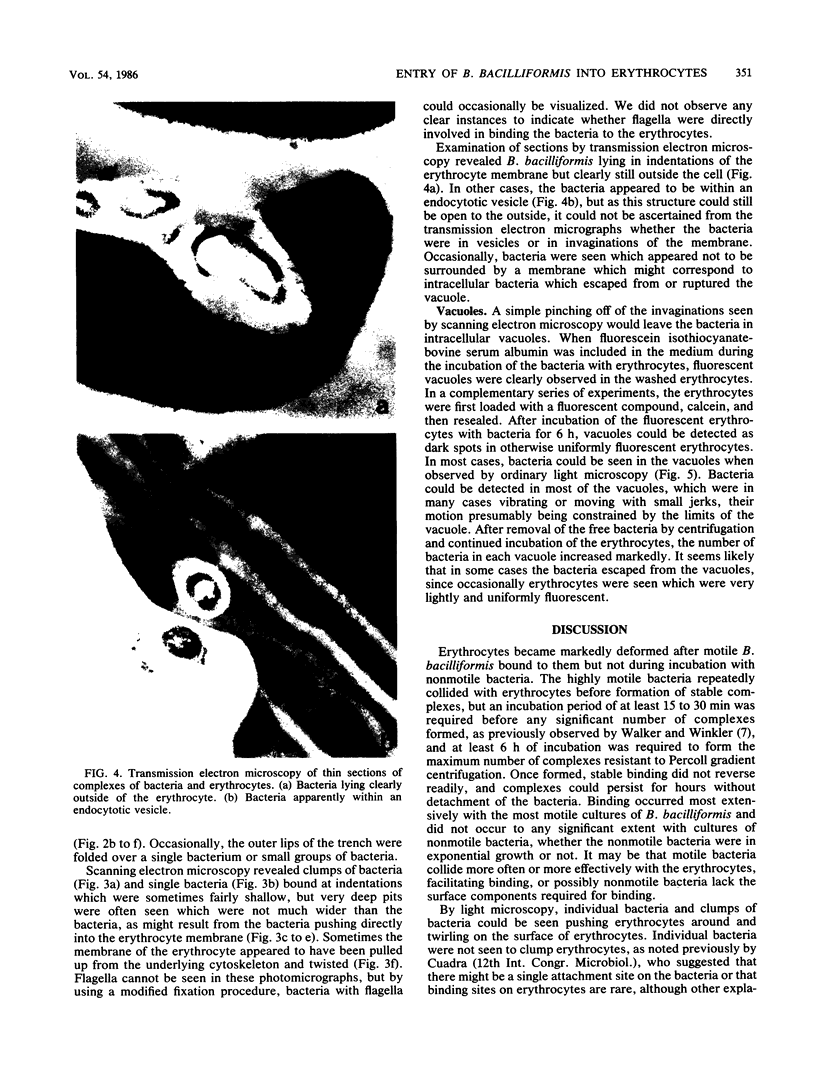
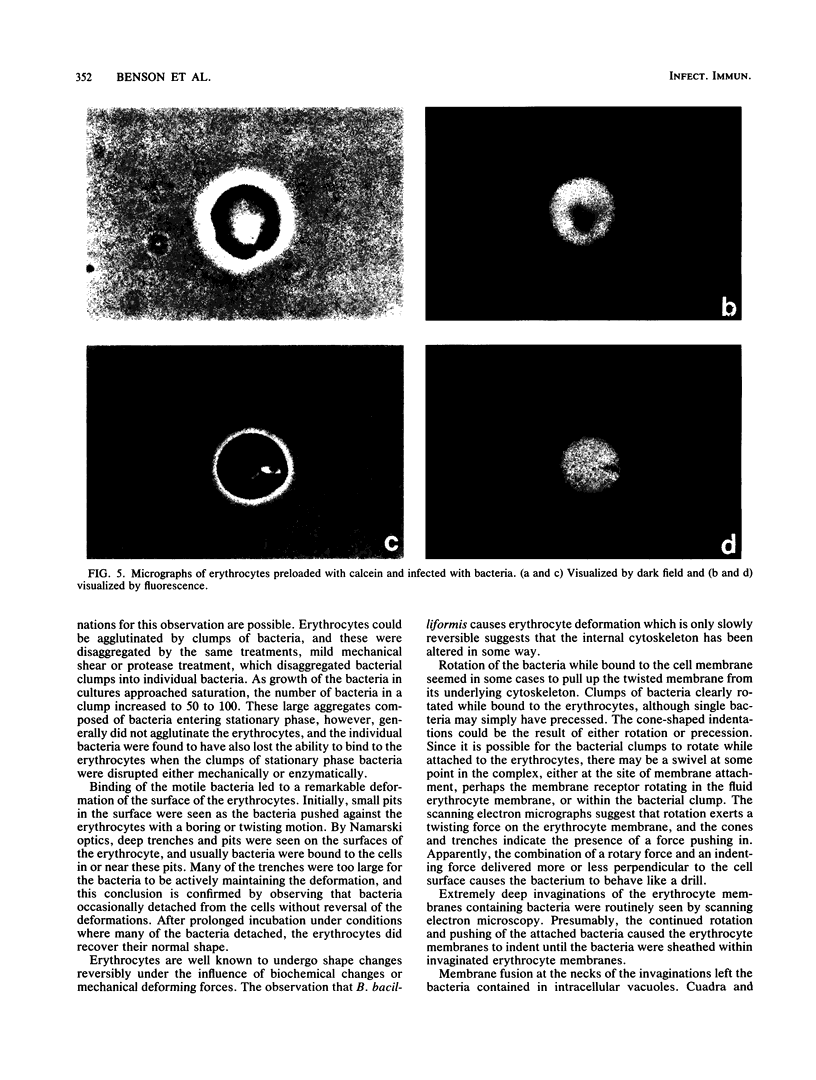
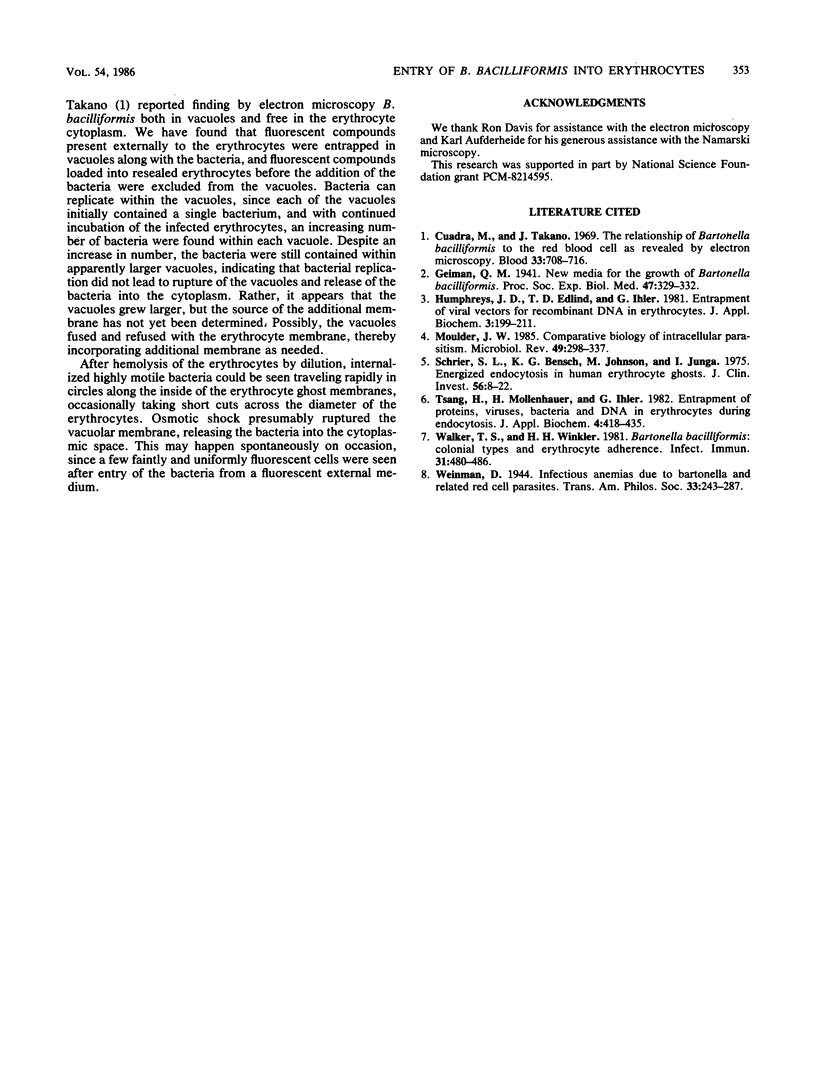
Images in this article
Selected References
These references are in PubMed. This may not be the complete list of references from this article.
- Moulder J. W. Comparative biology of intracellular parasitism. Microbiol Rev. 1985 Sep;49(3):298–337. doi: 10.1128/mr.49.3.298-337.1985. [DOI] [PMC free article] [PubMed] [Google Scholar]
- Schriei S. L., Bensch K. G., Johnson M., Junga I. Energized endocytosis in human erythrocyte ghosts. J Clin Invest. 1975 Jul;56(1):8–22. doi: 10.1172/JCI108083. [DOI] [PMC free article] [PubMed] [Google Scholar]
- Walker T. S., Winkler H. H. Bartonella bacilliformis: colonial types and erythrocyte adherence. Infect Immun. 1981 Jan;31(1):480–486. doi: 10.1128/iai.31.1.480-486.1981. [DOI] [PMC free article] [PubMed] [Google Scholar]



